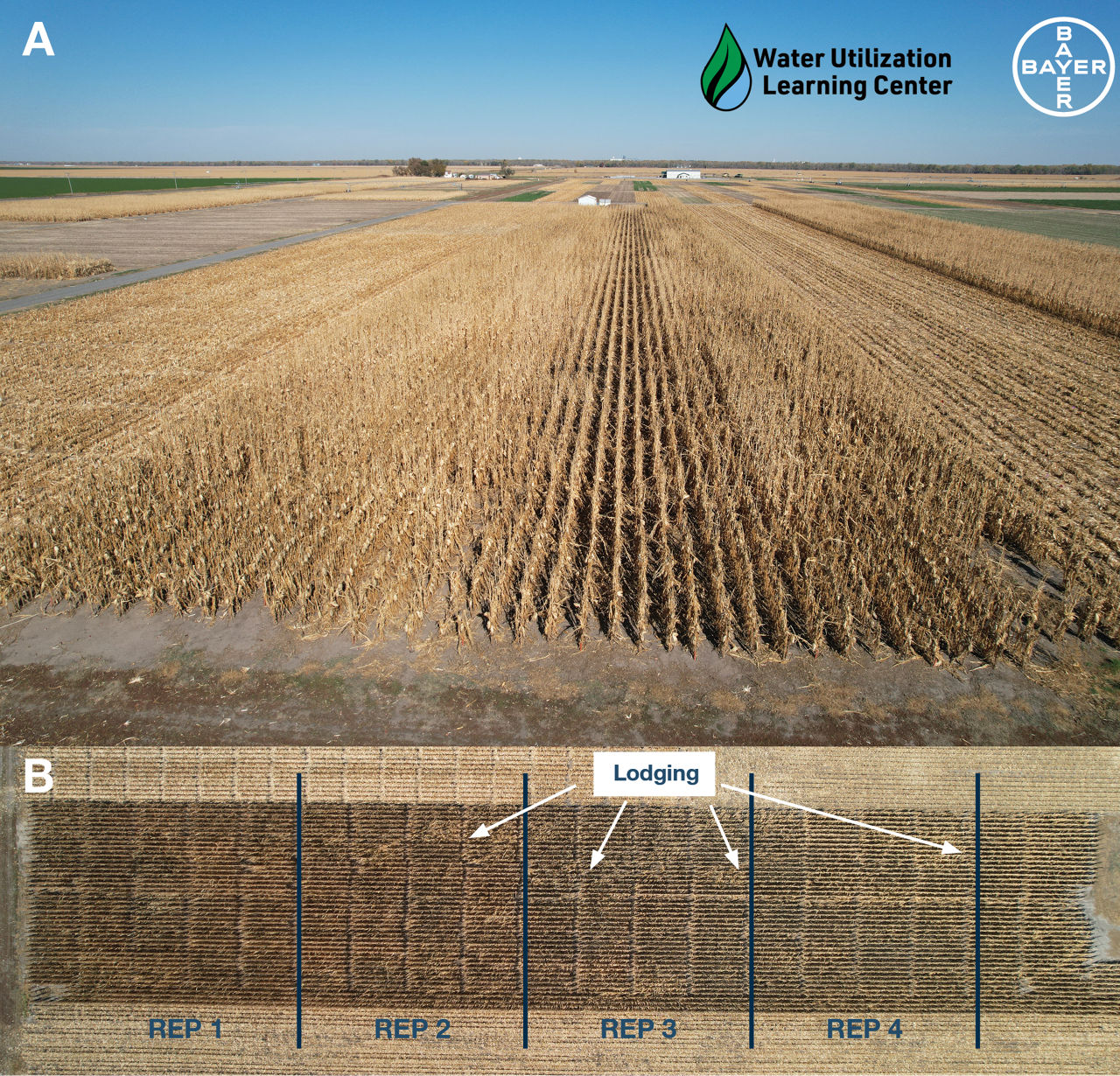2023 DEKALB® Brand Corn Product Comparisons Following Cover Crop Mix
May 20, 2024
TRIAL OBJECTIVE
- Testing various corn products is crucial to better understanding how to position products in the right field and under the right management conditions to meet the farmer’s needs.
- The objective of this trial was to test a broad spectrum of DEKALB® brand corn products that are currently recommended for the western Central Plains in a high-residue environment.
RESEARCH SITE DETAILS

- The trial was arranged in a randomized complete block design with four replications. The only treatment factor was the corn product.

- Early stand counts and Normalized Difference Vegetation Index (NDVI) were measured on 6/26/2023 when the corn was about the V7 growth stage.
- Final stand counts, intactness ratings, lodged plants, and ear height were measured at harvest time.
- The total rainfall accumulated during the 2023 corn growing season was 13.5 inches. This trial was irrigated with a linear overhead irrigation system and the total irrigation applied was 2 inches. The trial had a wind storm a few days prior to harvest that impacted intactness ratings and stalk lodging percentages.

UNDERSTANDING THE RESULTS
- During the spring of 2023, the predominant species in the cover crop mix were cereal rye and winter barley. Cover crop biomass averaged 1,062 lb/acre at the time of termination on 05/20/2023.
- DEKALB® DKC61-41RIB brand blend had the highest recorded yield at 214.8 bu/acre, while DEKALB® DKC64-65RIB brand blend had the lowest recorded yield at 186.6 bu/acre, 13.1% less (Table 3). The yield differences across DEKALB® brand products were not statistically significant, which indicates that any differences in yield were likely due to chance and not true differences in yield potential between the products.
- Early stand counts for DEKALB® DKC111-33RIB brand blend were 33,977 plants/acre, 5.6% less than the seeding rate of 36,000 seeds/acre (Table 3). DEKALB® DKC105-33RIB brand blend had the lowest stand count at 32,314 plants/acre, or 10.2% less than the seeding rate. Despite the numerical differences, there was no statistical difference in early stand across the ten DEKALB® brand products.
- Normalized Difference Vegetation Index (NDVI) at the V6 growth stage was the highest (0.57) with DEKALB® DKC105-33RIB brand blend, while DEKALB® DKC62-89RIB brand blend was the lowest (0.47) (Table 3). Those differences could be justified by their distinct relative maturities and Growing Degree Units (GDUs), where a late-maturity product would be a growth stage behind and consequently have lower biomass, a key indicator of NDVI. However, those differences were not statistically significant.
- Late-season stand counts were the highest with DEKALB® DKC111-33RIB brand blend at 34,531 plants/acre, or 4.1% less than the seeding rate of 36,000 seeds/acre. DEKALB® DKC101-33RIB brand blend had the lowest stand count of 31,046 plants/acre or 13.8% less than the seeding rate (Table 3). Despite the numerical differences, there was no statistical difference in late stand across the ten DEKALB® brand products.
- Stalk lodging was significantly different between the DEKALB® brand products with DEKALB® DKC62-89RIB brand blend having the highest lodging percentage (32.3% of total final stand) while DEKALB® DKC101-33RIB brand blend had the lowest lodging percentage at 1.6% of total final stand (Table 3). The trial had a wind storm a few days prior to harvest that impacted intactness ratings and stalk lodging percentages.
- DEKALB® DKC105-33 brand blend had the best intactness rating (3.5) among the ten DEKALB® brand products tested (Table 3).
- There was a significant difference in ear height among the DEKALB® brand products in this trial (Table 3). DEKALB® DKC62-89RIB brand blend had the highest average ear height at 51.6 inches while DEKALB® DKC101-33RIB brand blend had an average ear height of 41.5 inches (20% lower than DEKALB® DKC62-89RIB brand blend). There was a trend of lower ear heights with low relative maturity products.


1210_391174